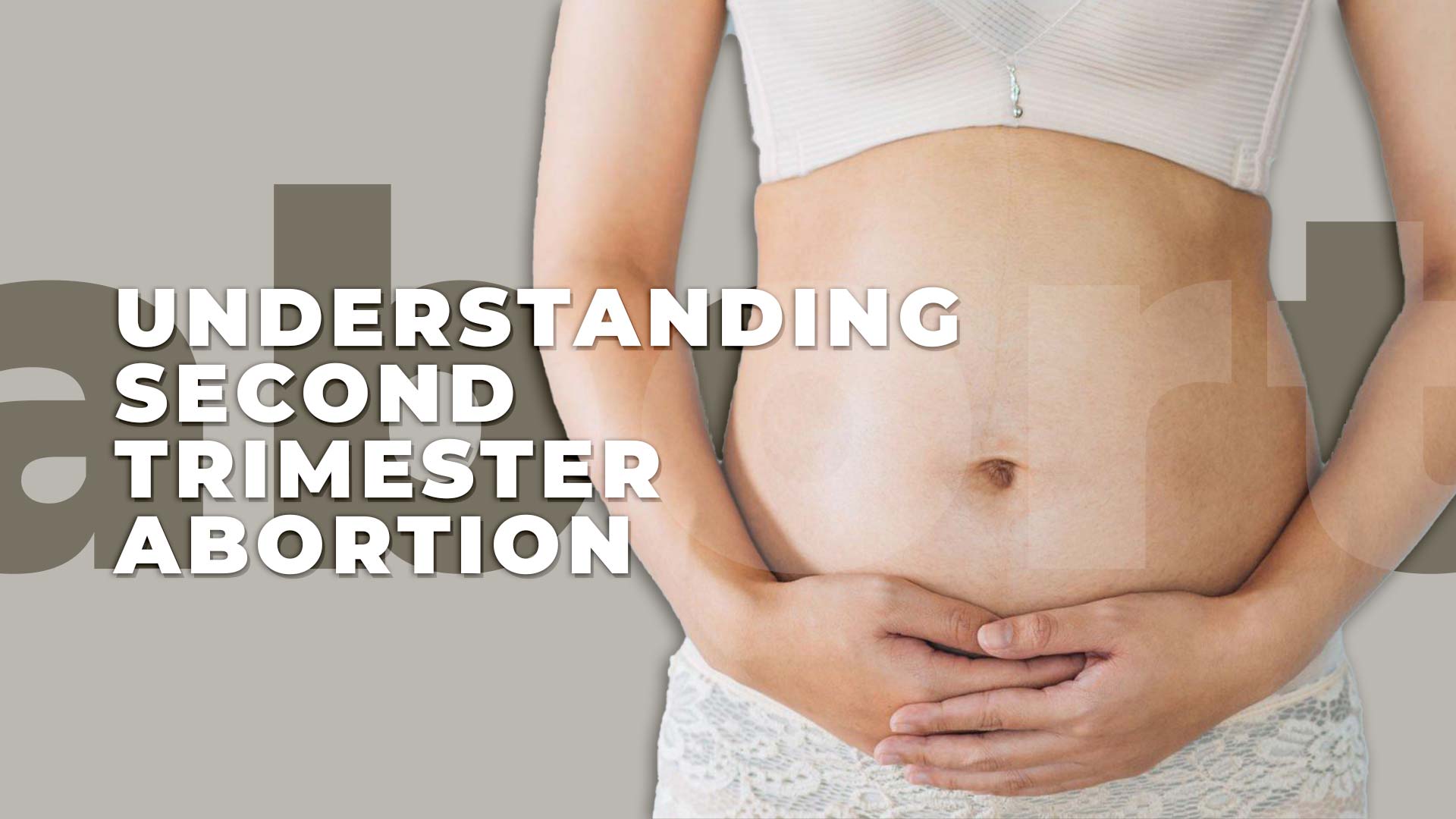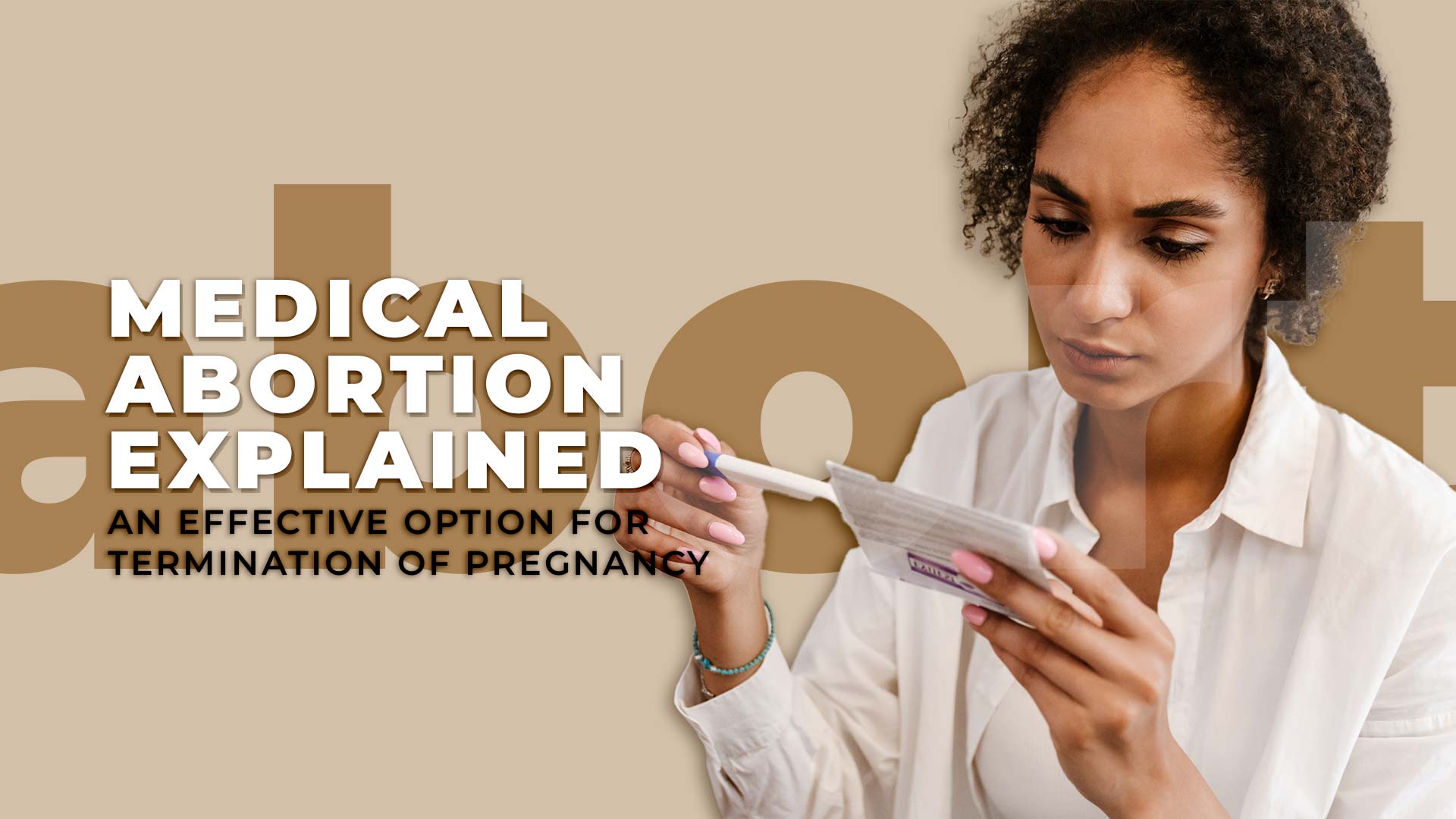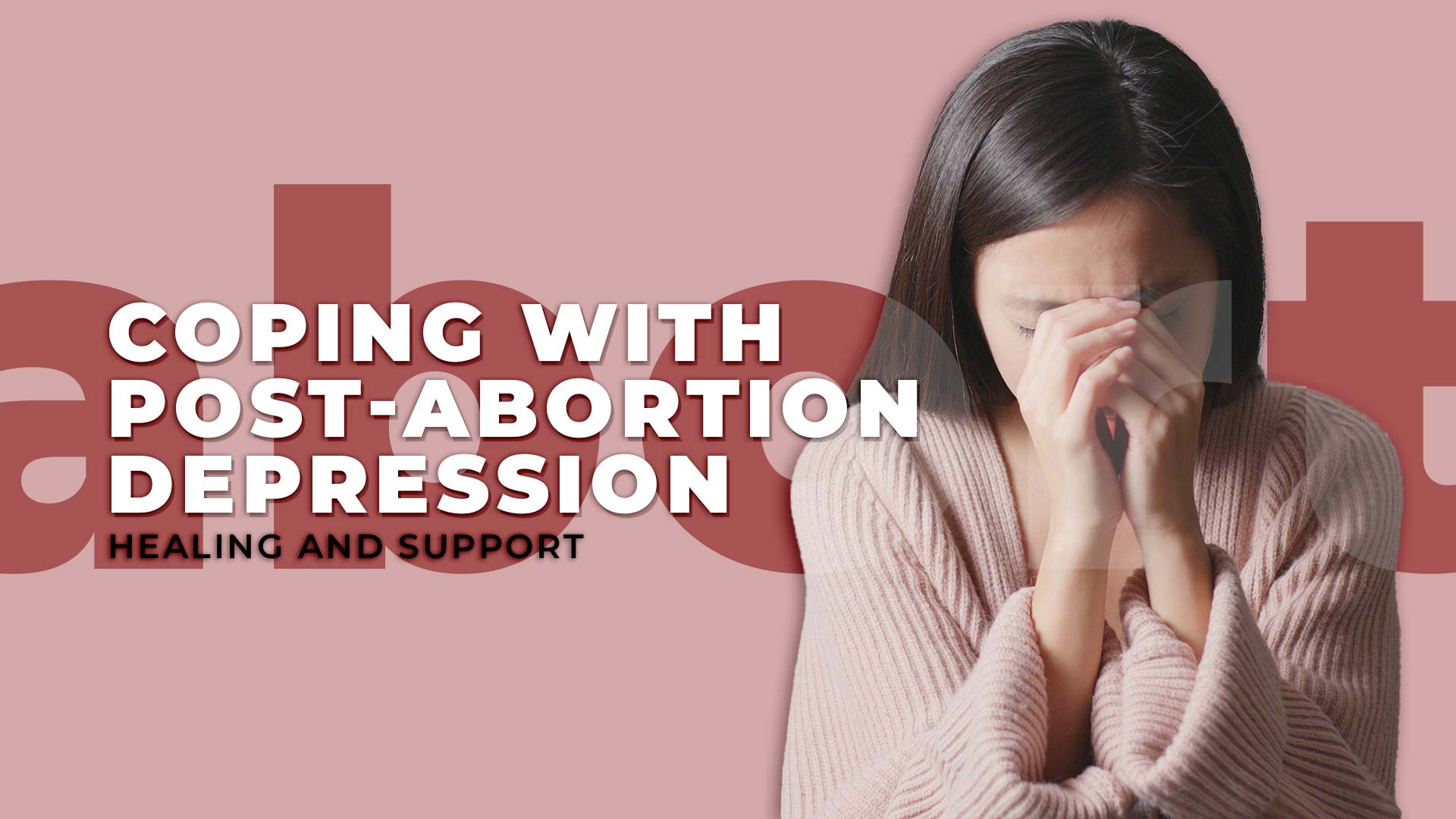Second-trimester abortion means terminating a pregnancy between 13 and 26 weeks of gestation.[1] This period is divided into early (13-16 weeks), middle (17-20 weeks), and late (21-26 weeks) stages. The fetus is growing and developing rapidly, and the pregnancy has advanced significantly from the early stages. A second-trimester abortion may be more complex than a first-trimester abortion due to the larger size of the fetus and the more developed placenta.
There are several reasons why a person may choose to have a second-trimester abortion.
- Fetal anomalies: Fetal anomalies are the most common reason for second-trimester abortion. These anomalies may be incompatible with life or may result in significant physical or mental disability. The decision to terminate a pregnancy due to fetal anomalies can be emotionally challenging, and many individuals may seek counseling and support during this time.
- Maternal health complications: In some cases, continuing a pregnancy may pose a significant risk to the health or life of the pregnant person. This may include severe hypertension, heart disease, or cancer. In these cases, a second-trimester abortion may be necessary to protect the pregnant person’s health.
- Delayed diagnosis: In some cases, a pregnancy may not be diagnosed until the second trimester, making it too late to have a first-trimester abortion. This may occur if the person has irregular periods, takes hormonal birth control, or has a medical condition affecting pregnancy testing.
- Personal reasons: A person may choose to have an abortion for personal reasons, such as financial or relationship concerns. Individuals must have access to safe and legal abortion care to make the best decisions for their health and well-being.
Second-trimester abortion is a safe and effective option for individuals who need to end a pregnancy during this time. However, individuals must have access to appropriate medical care and support throughout the process. It is also essential that individuals can make their own decisions about their reproductive health, including the decision to have an abortion, without facing stigma or barriers to
Procedures used for second-trimester abortion
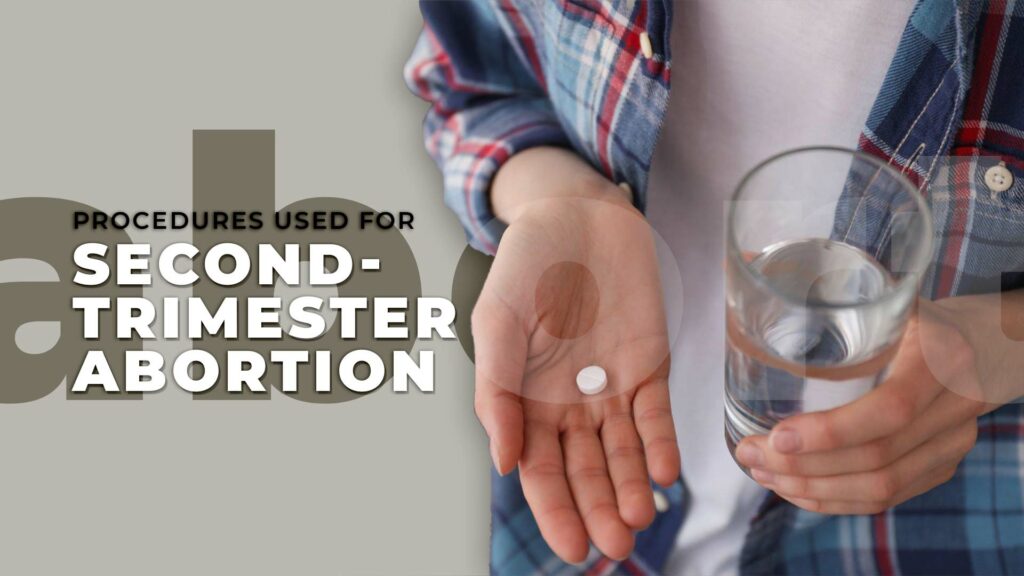
Several medical procedures are used for second-trimester abortion, and the choice of method depends on various factors, including the gestational age of the pregnancy, the health of the pregnant person, and the reason for the abortion.
- Dilation and evacuation (D&E): Dilation and evacuation is the most common method used for second-trimester abortion[2], and it involves dilating the cervix and using instruments such as forceps, suction, and curettes to remove the fetus and placenta from the uterus. A study states that D&E is a safe and effective second-trimester abortion with a success rate of over 99%.[3]
D&E performed at 14-24 weeks of gestation had a complication rate of less than 1%, and the most common complication was hemorrhage.[4] Moreover, most patients reported feeling satisfied with their decision to have an abortion and the care they received during the procedure.
- Induction abortion: Induction abortion involves using a medication, such as misoprostol, to induce labor and deliver the fetus. This method is less commonly used for second-trimester abortion due to the increased risk of complications, such as hemorrhage and infection. However, it may be used if the pregnant person cannot undergo surgery due to a medical condition or concerns about cervical dilation.
Induction abortion is associated with a higher rate of complications than D&E, including hemorrhage and infection.[4] The review also found that induction abortion had a higher failure rate, meaning that the procedure was unsuccessful in terminating the pregnancy in some cases.
- Medical abortion: Medical abortion involves using a medication, such as an MTP Kit, which consists of mifepristone and misoprostol, to terminate the pregnancy. However, medical abortion is typically only used in the early second trimester, up to 13- 15 weeks of gestation[5], and is less effective than D&E and induction abortion.
Moreover, medical abortion in the second trimester has a lower success rate than D&E, with failure rates ranging from 9-16%.[6] The review also found that medical abortion had a higher risk of incomplete abortion.
The method used for second-trimester abortion will depend on various factors, including the gestational age of the pregnancy, the health of the pregnant person, and the reason for the abortion. Overall, D&E is the most common and effective method used for second-trimester abortion. Induction abortion and medical abortion may be used in some instances. Still, they have a higher risk of complications and lower success rates than D&E. Individuals must have access to appropriate medical care and support throughout the process, regardless of the method used.
Risks and side effects of second-trimester abortion
Second-trimester abortion is a medical procedure; like any medical procedure, there are potential physical risks and side effects. Some of the common physical risks associated with second-trimester abortion include:
- Infection: Infection is a potential risk after any abortion procedure. Symptoms of infection may include fever, chills, abdominal pain, and foul-smelling discharge.
- Bleeding: Bleeding is a common side effect of second-trimester abortion. The amount and duration of bleeding may vary from person to person, but it is usually heavier than the bleeding after a first-trimester abortion.
- Injury to the uterus or other organs: There is a small risk of damage to the uterus or other organs during a second-trimester abortion.
- Anesthesia complications: Second-trimester abortion is usually performed under general anesthesia, which carries risks, such as allergic reactions, breathing problems, and nausea.
Abortion can be a complex and emotionally challenging decision for some individuals. Many individuals may experience guilt, shame, and sadness after an abortion. These emotions may relate to personal beliefs, cultural or religious values, or decision-making. Some individuals may experience anxiety and depression after an abortion, particularly if they feel stigmatized or unsupported. Acknowledging and addressing the emotional risks and providing appropriate support and counseling is essential.
Moreover, abortion can impact relationships with partners, family members, and friends. Some individuals may experience conflict or tension with their partners or family members due to the decision to have an abortion. A study published in the Journal of Psychiatric Research found that most individuals do not experience significant mental health problems after an abortion.[7] The study suggests that providing adequate counseling and support can help individuals cope with the emotional challenges of abortion.
Providing individuals with appropriate post-abortion care is essential to minimize the risks and side effects of second-trimester abortion. This may include:
- Pain management: Pain is a common side effect of second-trimester abortion. Individuals may be prescribed pain medication or given instructions for over-the-counter pain relief.
- Follow-up care: Individuals may need follow-up care after the procedure to monitor for complications or side effects.
- Counseling and support: Individuals may benefit from counseling and support to address any emotional or psychological concerns related to abortion.
According to the World Health Organization (WHO), post-abortion care should be comprehensive and include physical and emotional support. WHO recommends that healthcare providers provide appropriate counseling and support before, during, and after the abortion procedure.[8]
Legal and ethical issues surrounding second-trimester abortion
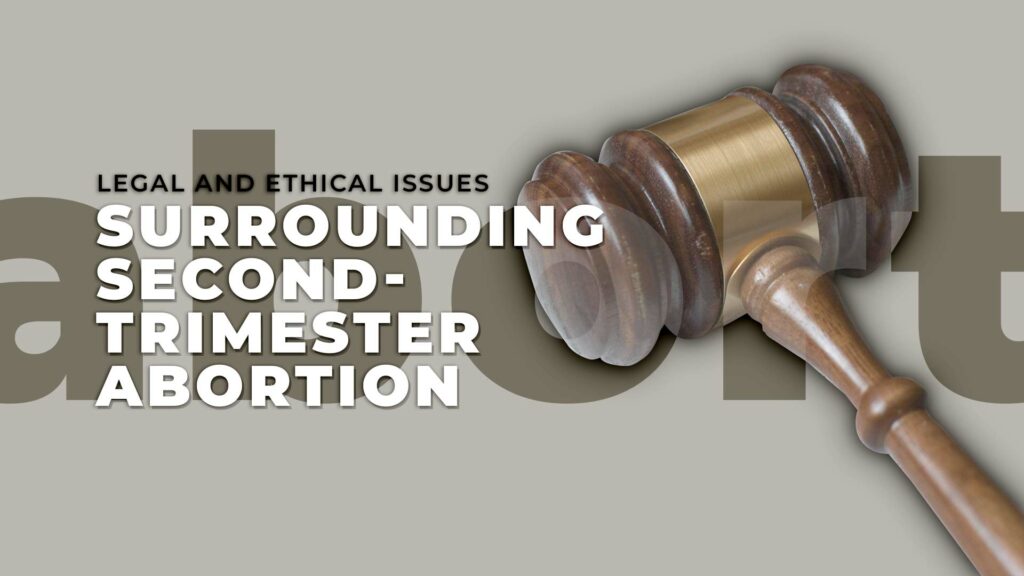
Abortion laws vary by country and region, and there are often legal and ethical debates surrounding the regulation of second-trimester abortion. In some countries, second-trimester abortion is only permitted in certain circumstances, such as when there is a risk to the woman’s life or health or in cases of fetal abnormality. In other countries, there may be more restrictions on second-trimester abortion, or it may be prohibited altogether.
For example, in the United States, the legality of second-trimester abortion is determined by state law. Some states have enacted laws restricting second-trimester abortion, such as mandatory waiting periods or ultrasound requirements. These laws have been the subject of legal challenges and debates about women’s reproductive rights.
Various factors, including legal restrictions, geographic barriers, and healthcare provider availability, can limit access to second-trimester abortion. In some areas, there may be no healthcare providers who offer second-trimester abortion, or individuals may face significant travel or financial barriers to access the procedure.
According to a report by the Guttmacher Institute, access to second-trimester abortion is limited in many parts of the world, particularly in low-income countries. The report notes that individuals in these areas may face stigma, legal barriers, and a lack of trained healthcare providers who can perform a second-trimester abortion.[9]
Abortion can be a contentious issue for individuals and communities with strong religious or moral beliefs. Some individuals and healthcare providers may object to performing or supporting second-trimester abortion based on their beliefs or values. In some cases, religious or moral objections can lead to challenges in accessing second-trimester abortion. For example, some hospitals or healthcare systems may have policies that prohibit second-trimester abortion, even if it is legal in the area.
However, balancing the right to conscientious objection with the obligation to provide appropriate healthcare services is vital. Healthcare providers should not allow personal beliefs to interfere with their obligation to provide medically appropriate patient care. Also, healthcare providers should provide patients with information about all their options for care, even if they object to some of those options.
In conclusion, legal and ethical issues surrounding second-trimester abortion can be complex and multifaceted. It is crucial to consider the legal and ethical frameworks in place and the practical realities of accessing and providing second-trimester abortion. Healthcare providers should prioritize providing medically appropriate care and support for their patients while respecting individuals’ and communities’ religious and moral beliefs.
The Final Thought
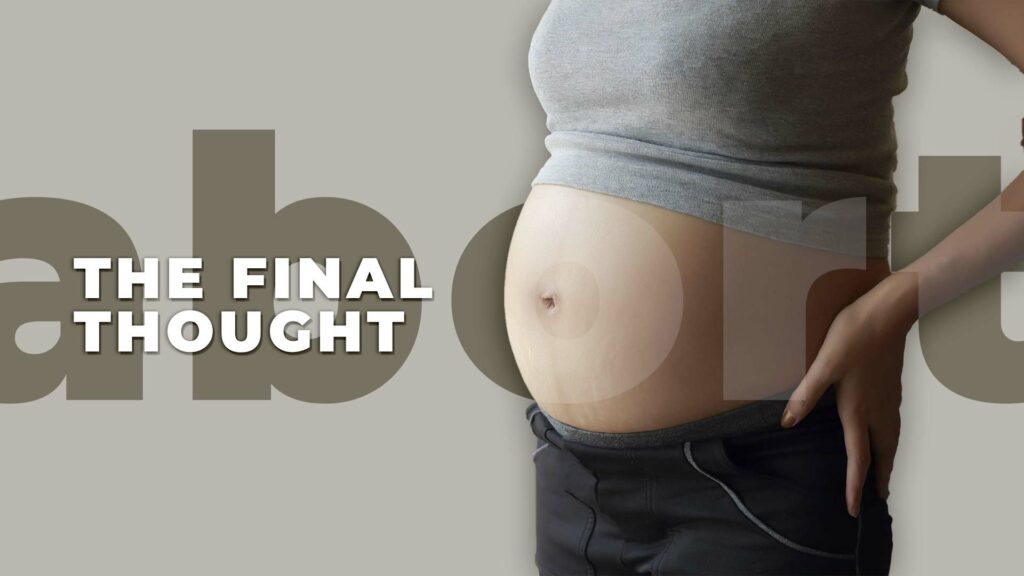
Access to safe and legal abortion is essential for individuals to make informed decisions about their reproductive health and to reduce the risks associated with unsafe abortion. According to the World Health Organization (WHO), unsafe abortion is a leading cause of maternal mortality and morbidity worldwide, particularly in low-income countries with restrictive abortion laws.[10] Ensuring access to safe and legal abortion can help reduce the incidence of unsafe abortion and improve maternal health outcomes.
Furthermore, future developments in abortion care may include advances in medical technology and changes in legal and ethical frameworks surrounding abortion. For example, new medications and technologies may make medical abortion more accessible and effective, while changes in abortion laws and policies may expand access to abortion services. Additionally, ongoing efforts to reduce stigma and improve education and awareness about reproductive health may help increase access to safe and legal abortion.
References
- Second-Trimester abortion ACOG. Available at: https://www.acog.org/clinical/clinical-guidance/practice-bulletin/articles/2013/06/second-trimester-abortion
- Kerns, J.L., Turk, J.K., Corbetta-Rastelli, C.M. et al. Second-trimester abortion attitudes and practices among maternal-fetal medicine and family planning subspecialists. BMC Women’s Health 20, 20 (2020). Available at: https://doi.org/10.1186/s12905-020-0889-9
- Castleman LD, Oanh KT, Hyman AG, Thuy le T, Blumenthal PD. Introduction of the dilation and evacuation procedure for second-trimester abortion in Vietnam using manual vacuum aspiration and buccal misoprostol. Contraception. 2006 Sep;74(3):272-6. doi: 10.1016/j.contraception.2006.03.021. Epub 2006 May 30. PMID: 16904423. https://pubmed.ncbi.nlm.nih.gov/16904423/
- Abortion risks: LA dept. of health (no date) Abortion Risks | La Dept. of Health. Available at: https://ldh.la.gov/page/1063
- Kapp, N. et al. (2021) “Medical abortion at 13 or more weeks gestation provided through telemedicine: A retrospective review of services,” Contraception: X, 3, p. 100057. Available at: https://doi.org/10.1016/j.conx.2021.100057
- Kapp N, Andersen K, Griffin R, Handayani AP, Schellekens M, Gomperts R. Medical abortion at 13 or more weeks gestation provided through telemedicine: A retrospective review of services. Contracept X. 2021 Jan 25;3:100057. doi: 10.1016/j.conx.2021.100057. PMID: 33615210; PMCID: PMC7881210. https://www.ncbi.nlm.nih.gov/pmc/articles/PMC7881210/
- The facts about abortion and mental health (no date) Monitor on Psychology. American Psychological Association. Available at: https://www.apa.org/monitor/2022/09/news-facts-abortion-mental-health
- Abortion (no date) World Health Organization. World Health Organization. Available at: https://www.who.int/health-topics/abortion#tab=tab_3
- Singh, S. et al. (2022) Abortion worldwide 2017: Uneven progress and unequal access, Guttmacher Institute. Available at: https://www.guttmacher.org/report/abortion-worldwide-2017
- Abortion (no date) World Health Organization. World Health Organization. Available at: https://www.who.int/news-room/fact-sheets/detail/abortion

